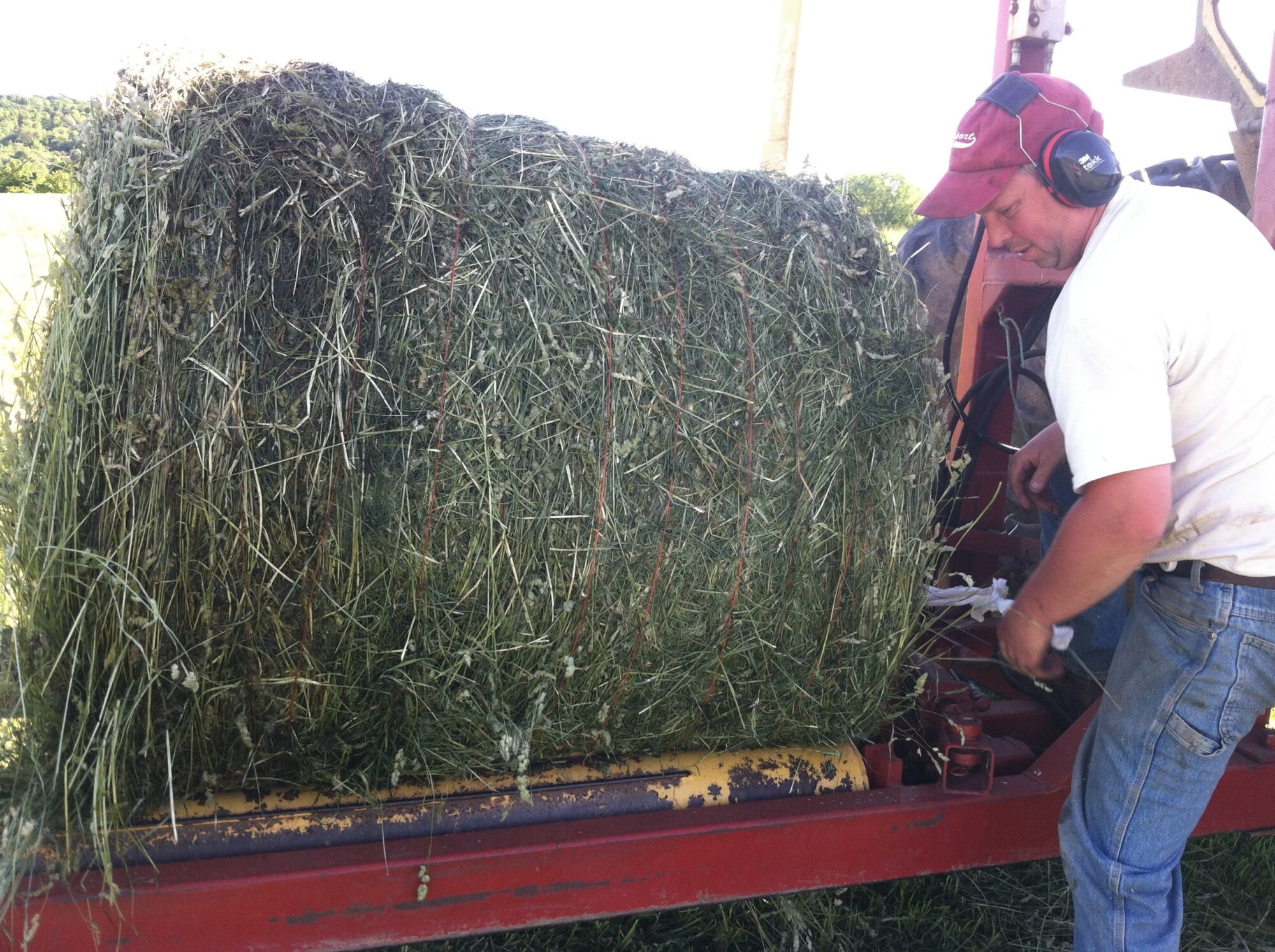Before we started farming, I knew very little about hay. To this day, it still strikes me as a crazy amalgam of art and science. You’ve probably heard of the saying, “Make hay while the sun shines.” Making hay is entirely dependent upon dry weather. Take a drive through the countryside during any stretch of hot, sunny days this summer and you’ll see hay being made in field after field, on farm after farm…the scent of fresh-cut grass filling the air. And because putting enough hay away for your animals for the coming winter is so vitally important, time is not to be wasted. Conversations between farmers these days almost always revolve around the forecast—how many days of sunshine are expected and what are the chances (however minimal) of a passing shower.
Of course, every farmer has his or her own opinions on the best hay for their animals and the best way to make it. While I would never argue over what type of hay is best, they certainly all have their pros and cons. First, it helps to define what “hay” is. Around here, it is primarily the different types of grasses like timothy and orchard, and perhaps some legumes like alfalfa and clovers, meant to be fed to animals. Some folks confuse “hay” with “straw.” Straw is the golden chaff left over after harvesting wheat or oats and is a hollow stem—great for animal bedding, but not for nourishment.
It also helps to understand some of the basic types of hay: “Dry” hay is pretty dry—about 14-18% moisture. After mowing, the farmer has to “ted” the hay multiple times with a “tedder”—a funny looking machine that literally fluffs the hay on the field so that it can dry quickly. This takes several days of NO rain, many hours on the tractor, and gallons of fuel. Every farmer has felt the sting of having “hay down” (the grass has been mowed, perhaps tedded several times), when an unexpected rain shower passes through, making virtual trash of what was going to be beautiful hay. Dry hay is often made into small square bales and sometimes into larger square or round bales, all of which must be stored under cover. If made too wet, mold will develop or “hot spots” can be created in the tightly compacted bales, which then have the potential to spontaneously combust—a scary thought indeed.
Once it is sufficiently dry, the farmer rakes the hay into tight rows so that it can be baled. Small square bales can be tossed directly into a hay wagon if your baler has a kicker on it. Otherwise, they will have to be stacked on the wagon by hand. Unloading and stacking hundreds and hundreds of bales in a stuffy hay mow on a hot July day is a virtual rite of passage for most farm kids.
“Haylage” is a wetter hay (about 40-60% moisture) that is dried down only a little after its initial mowing, taking about a day or two of dry weather. These grasses and/or legumes are made into large, round bales and then covered with wrap. You may have seen what look like enormous white marshmallows lined neatly along the edges of hayfields throughout the Mohawk Valley. The wrap traps the heat that is created when the sugars in the grass start to ferment. This fermentation is similar to what ruminants (cows, sheep, goats) do naturally, making the hay more palatable and resulting in more available nutrition for the animal. These marshmallow-like bales do not need to be stored indoors, but the wrap must remain intact to avoid spoilage. Ensuring sufficient moisture levels and proper handling to keep dirt out of the bale is extremely important in killing listeria, which can be lethal. These big bales must be moved using heavy equipment, as they can weigh as much as 1,000 lbs or more.
A third type, chopped hay, is blown in to tall silos, packed into bunk silos or even blown into long white plastic bags to make ensilage. Moisture content in this hay is higher than dry hay, although some farms seem to like making it significantly drier than haylage. Chopped hay is relatively quick to make and easy to handle, making it quite popular with many farmers. Some nutritionists argue, however, that the shorter pieces of chopped grass are less ideal for ruminants than the longer pieces found in dry hay or haylage.
Timing, weather, equipment, hired help (or lack thereof) and personal health issues all seem to conspire against the farmer in all aspects of farming, so making hay “while the sun shines” can be an especially stressful time. It also means everything else on the farm—and in your family life—must be put on hold to get the hay done. I must admit, however, I really like it when we’re in hay-making mode. Because we are putting feed away for our animals, it feels like we are putting money in the bank. And that always feels good!
